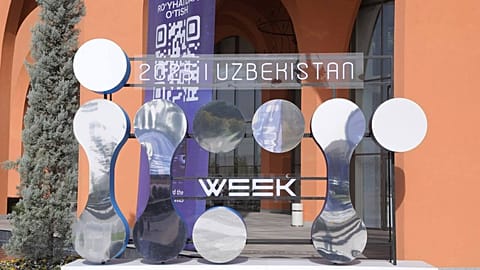Uzbekistan offers tax breaks, cheap electricity, and renewable-energy support, with most sites planned in Karakalpakstan to help build the country’s AI ecosystem by 2030.
Uzbekistan has announced a major package of incentives to attract more than €85 million in foreign investment into artificial intelligence (AI) and data infrastructure.
The programme, introduced by presidential decree, aims to position the far-western Karakalpakstan region as a site for large data centres and high-tech projects, backed by generous tax incentives and government-supported infrastructure development.
Investors will receive significant tax breaks and access to low-cost electricity, while companies will be required to invest their own capital and adopt energy-efficient solutions, including renewable power and battery storage.
Ongoing upgrades to the country’s fibre-optic networks and telecom infrastructure are gradually improving the country's digital capacity, according to assessments by Uzbekistan's Ministry of Digital Technologies and a UNDP study on Uzbekistan’s digital economy
These developments, combined with relatively low operating costs and Uzbekistan’s position between larger Eurasian markets, make the country a potentially practical location for data-centre and compute operations for firms looking to broaden their geographic footprint.
Why Karakalpakstan? Energy and climate advantages
Karakalpakstan is an autonomous region in Uzbekistan’s northwest and one of the areas most affected by the Aral Sea crisis.
The Aral Sea, once among the world’s largest inland lakes, began shrinking in the 1960s after large-scale irrigation projects diverted the rivers that fed it. As the water receded, the region experienced significant environmental changes, including the exposure of the former seabed, increased salinity, and more frequent dust storms.
The government’s decision to anchor high-tech and AI-related projects in the region is seen as an attempt to offset these long-term challenges by fostering new industries, attracting investment, and creating a more resilient economic base.
According to Kamola Sobirova, Advisor to the Minister of Digital Technologies, the region offers a rare combination of energy availability, climate conditions, and land resources needed for large-scale data and AI infrastructure.
Cooling systems can account for up to 70 per cent of a data centre’s power consumption, she noted, and the region’s position within the northwestern part of the national power grid — where electricity production exceeds consumption by roughly 10–15 per cent — ensures a more stable supply environment.
Although traditional data centres often rely on large volumes of water for cooling, projects planned in Karakalpakstan are expected to adopt low-water or water-free cooling solutions, given the region’s well-documented water scarcity and the emphasis on energy-efficient technologies in recent investment announcements.
The area’s relatively cool climate, with an average annual temperature of 12 to 14°C, also enables the use of natural “free cooling,” reducing dependence on water-based systems.
Sobirova said the initiative is also expected to drive socio-economic development by creating skilled jobs, attracting investment into IT and digital services, and stimulating the growth of supporting industries such as logistics, cooling systems, and equipment maintenance.
Thanks to its location and transit connections, Karakalpakstan could additionally become a base for exporting AI computing power, cloud storage, and big data services, said Kamola Sobirova.
Separately, the region serves as Uzbekistan’s western gateway to Kazakhstan and the Trans-Caspian corridor, with road and fibre-optic routes passing through the region before linking to wider Eurasian networks.
Project selection and evaluation
Project proposals will be reviewed for alignment with Uzbekistan’s national development agenda and its plans to expand the digital economy.
Sobirova said that project selection will prioritise proposals with strong export potential for AI and cloud services, as well as clear plans to train and employ local specialists.
Authorities will also consider the extent to which projects rely on renewable energy, the financial and operational stability of investors, and their ability to ensure reliable long-term operations.
The potential to reuse residual heat from data centres — for instance, to support greenhouse agriculture — will be evaluated alongside contributions to local infrastructure and community development.
The intention, Sobirova said, is for new facilities to become integrated parts of the broader technology ecosystem rather than isolated industrial sites.
Part of a broader AI strategy
The incentive programme forms part of Uzbekistan’s wider ambition to position itself not only as a national leader in digital technologies, but as a regional hub for IT and artificial intelligence.
Uzbekistan ranked 70th out of 188 countries in the AI Readiness Index 2024, rising 17 places from the previous year — progress the government attributes to policy reforms and increased cooperation with global technology partners.
The presidential decree outlines a plan to build a full AI ecosystem by 2030. This includes attracting more than €860 million in foreign investment, creating over 10 AI laboratories with academic institutions, and developing technology clusters that link universities, start-ups, and industry.
The strategy also calls for launching more than 100 AI-based projects, integrating renewable energy to reduce emissions, and expanding the use of environmentally sustainable digital infrastructure.
By 2030, the government aims to increase IT service exports to €4.3 billion and strengthen the country’s competitive position in the global technology market.


















